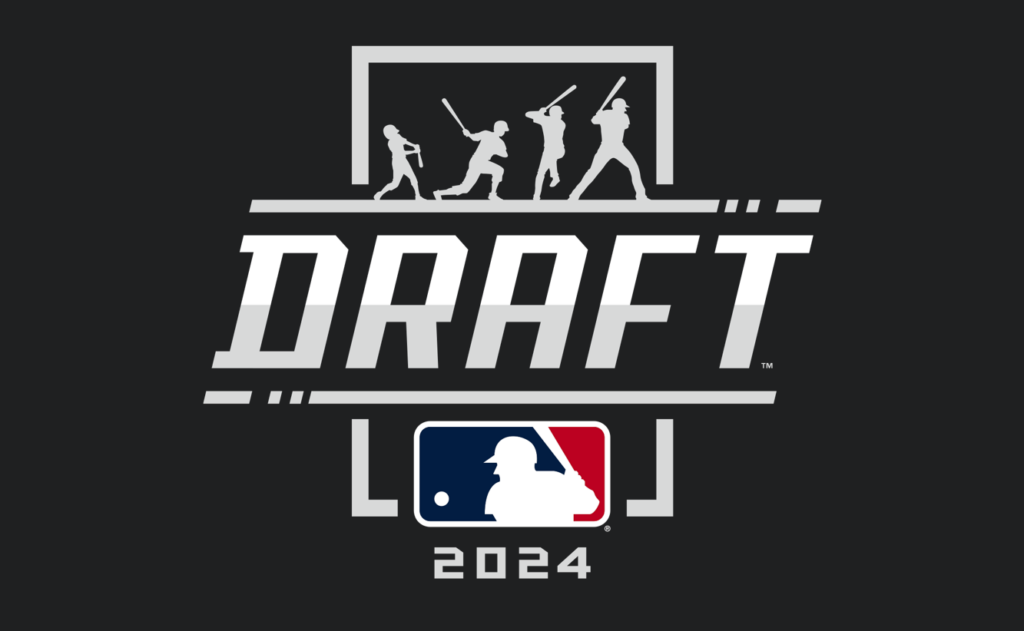As we get to the arms in the SEC, it’s worth noting last year’s No. 1 pick and bona fide ace Paul Skenes. Skenes is an anomaly, but the SEC always manages to produce a rather large basket full of talented power arms on the regular.
Here is this year’s class.
 Top 600 Draft Prospects | Mock Draft 6.0
Top 600 Draft Prospects | Mock Draft 6.0
1. Hagen Smith, LHP — Arkansas
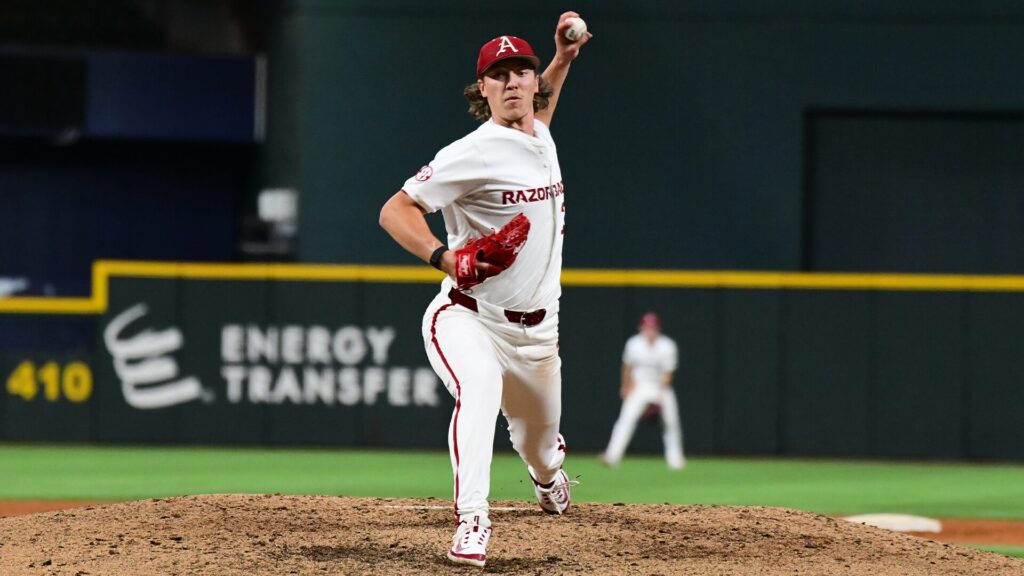
| G | IP | ERA | SO | BB |
|---|---|---|---|---|
| 16 | 84 | 2.04 | 161 | 34 |
Smith’s role in the race for the most dominant pitching season of the year with Chase Burns was incredibly entertaining. The lanky lefty set himself apart as the elite pitcher in the SEC this year, thanks to electrifying stuff.
Smith creates a funky and uncomfortable angle. His combination of arm slot and release height is unique, giving his already-good stuff a boost.
The fastball gets up to 100 mph, sitting mid-to-upper-90s, and is paired with a filth slider. The breaker is his calling card, a bat-misser that may be the best individual pitch in the class. His upper-80s changeup projects as a big-league offering, taking advantage of the deception and good arm speed.
Smith’s feel for the zone is solid, there;s some history of higher-than-optimal walk rates. It’s ace-caliber stuff, and like Burns, Smith has every ability to be a big-league impact player by 2026.
2. Jurrangelo Cijntje, BHP — Mississippi State

| Handedness | Average FB Velocity | K% | BB% | OPS |
|---|---|---|---|---|
| As RHP | 95.3 MPH | 30.4% | 7.3% | .635 |
| As LHP | 91 MPH | 22.5% | 9.7% | .836 |
Cijntje came into the year as more of a fun party trick but showed himself to be much more.
It’s utterly ridiculous arm talent, up to 99 mph with his fastball and a balanced mix including two breaking balls, a cutter, and a changeup. He’s a great athlete with control and command, and yep, he’s a switch pitcher into the low-90s as a lefty.
As a right-hander, the stuff suggests mid-rotation potential.
3. Bryce Cunningham, RHP — Vanderbilt
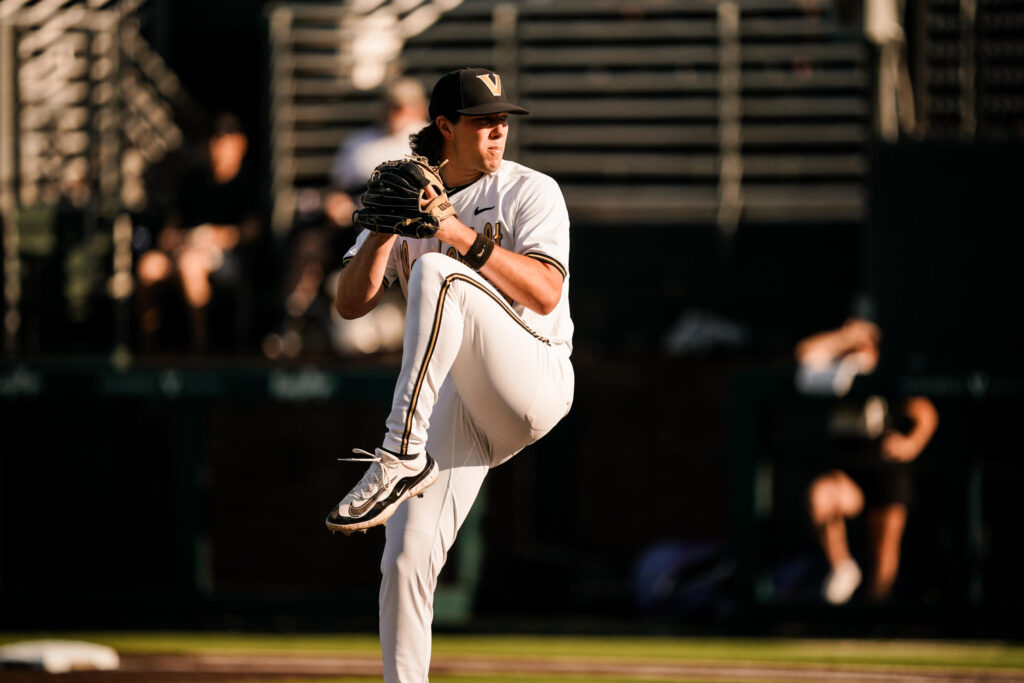
| G | IP | ERA | SO | BB |
|---|---|---|---|---|
| 16 | 84.2 | 4.36 | 96 | 34 |
Cunningham possesses a lot of the characteristics clubs seek in a pitcher. It’s a workhorse frame, a flexible, three-pitch mix, and a chance to miss bats.
It’s a riding fastball in the mid-90s and up to 97 mph with tons of ride, but command and a lack of deception have contributed to a lack of value to date.
Cunningham will throw a slider with late bite that looks like a potential above-average weapon, alongside a 60-grade changeup with some feel and confidence.
4. Luke Holman, RHP — LSU
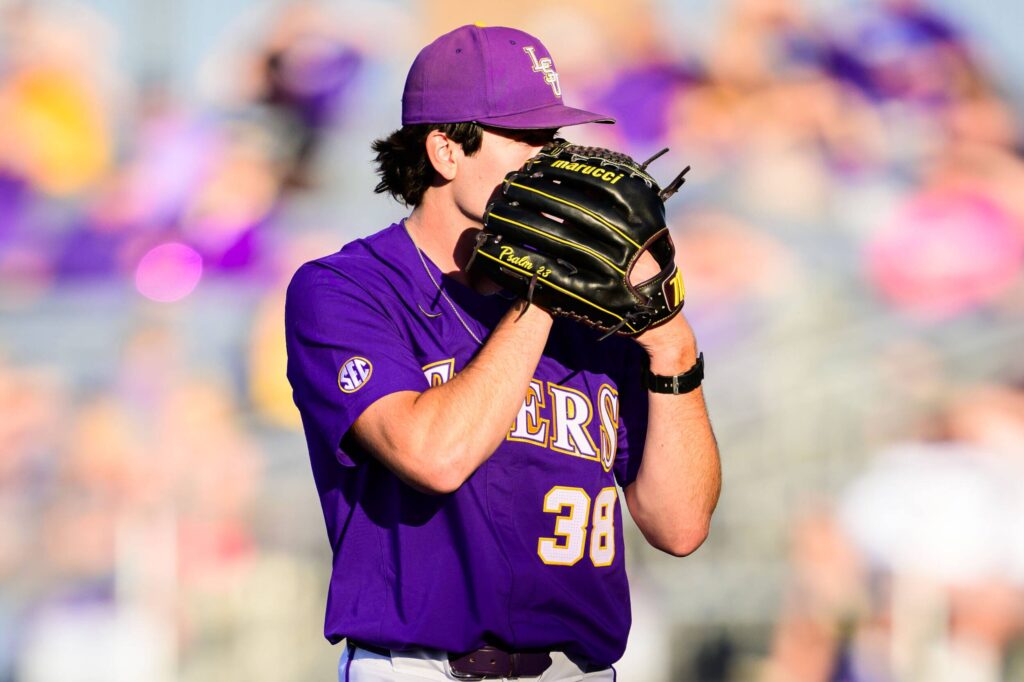
| G | IP | ERA | SO | BB |
|---|---|---|---|---|
| 16 | 91.2 | 2.75 | 127 | 33 |
Holman’s main appeal is that he knows how to pitch.
He’s up to 95 mph but pitches comfortably at 91-93, and his primary secondary offering is a low-80s slider that will miss some bats. He’ll mix in a mid-70s curve and occasional changeup that should be useful in pro ball.
Holman is projectable with good pitch shapes, and a buttery, effortless delivery producing above-average command. There’s more to unlock here if he grows into his frame and gets more physical, but he may need more fastball value to reach mid-rotation status.
5. Khal Stephen, RHP — Mississippi State
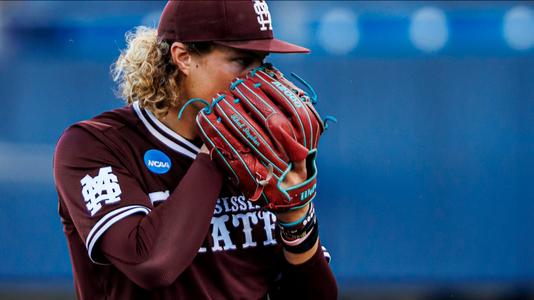
| G | IP | ERA | SO | BB |
|---|---|---|---|---|
| 16 | 96 | 3.28 | 107 | 21 |
Stephen improved his stock this season with a fastball up to 96 mph with carry and an ability to move it around the zone. His best offspeed pitch is a low-80s two-plane slider
He has a tertiary changeup that flashes average, too. It’s an easy profile to buy with the command and a fastball providing a strong starter’s floor, while upside remains as he matures.
6. Ben Hess, RHP — Alabama
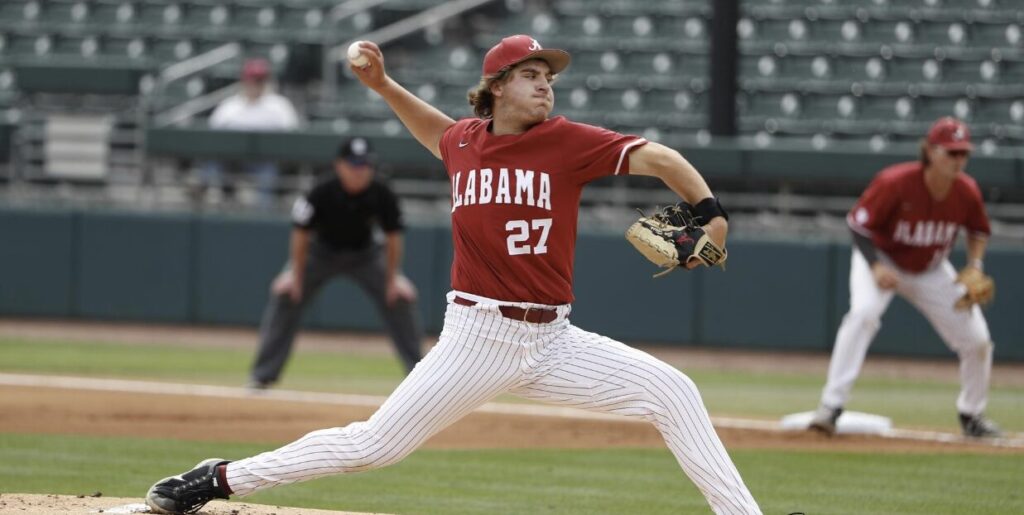
| G | IP | ERA | SO | BB |
|---|---|---|---|---|
| 15 | 68.1 | 5.80 | 106 | 35 |
First things first: Hess has the stuff. Hell grab 98 mph with his fastball, sitting in the low-to-mid-90s with hopping action. His best secondary is an extremely sharp mid-70s curve that projects as above-average or better. He has a slider and changeup to fill out a full arsenal.
Hess has an injury history clubs will have to reconcile. The stuff says No. 2 starter upside, but health and command questions are left to be answered after his junior season.
7. Drew Beam, RHP — Tennessee
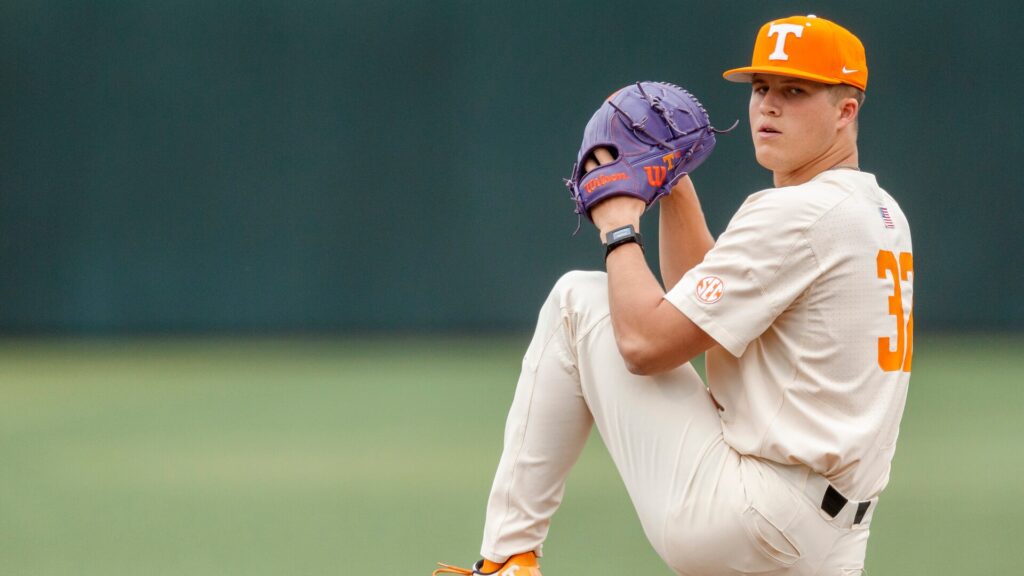
| G | IP | ERA | SO | BB |
|---|---|---|---|---|
| 19 | 102.1 | 4.22 | 99 | 27 |
Beam offers a robust floor with some ceiling as a workhorse right-hander with mid-90s velocity. He mixes in an average curveball and a consistent changeup with good fade. He will mix in the occasional cutter to keep barrels off the fastball.
Beam has 60 control and 55 command, and coupled with the fastball upside projects as a mid-rotation arm on the upside.
8. Gage Jump, LHP — LSU
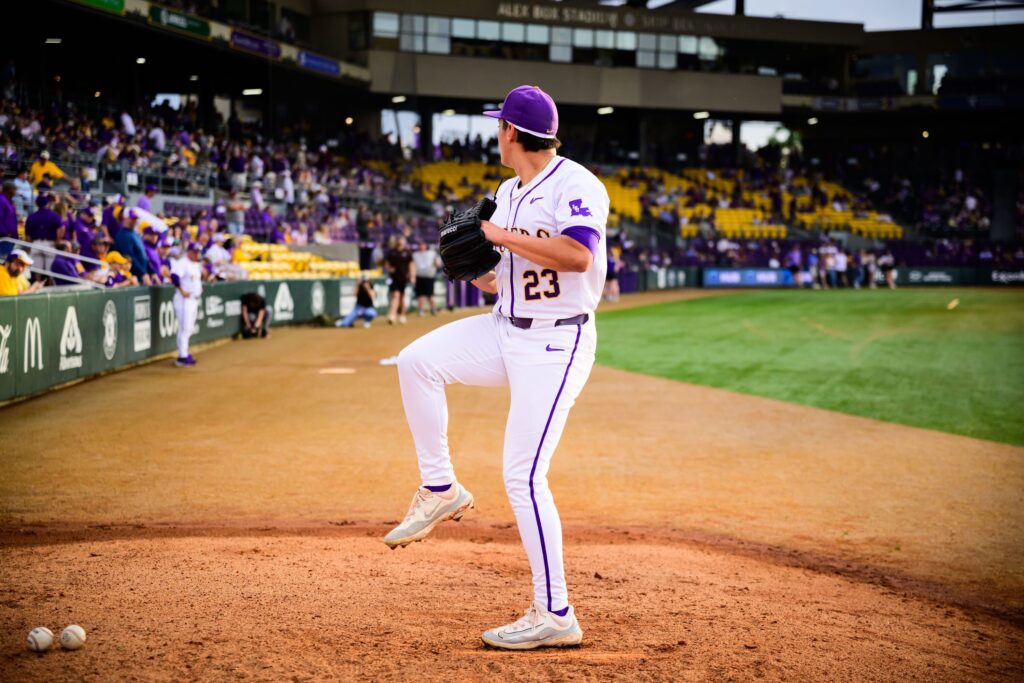
| G | IP | ERA | SO | BB |
|---|---|---|---|---|
| 17 | 83 | 3.47 | 101 | 22 |
Jump is a redshirt sophomore, a transfer from UCLA who had UCL surgery his freshman season, but has flourished at LSU.
Jump’s fastball gets up to 97 with carry and from low release height, creating a difficult at-bat, particularly for lefties.
Jump throws two different breaking balls, though it may be the same one with varied velocity and shape. He has a changeup but doesn’t throw it a lot. If there’s a distinct second breaking ball, he may not need the changeup to manage through pro lineups.
Despite Jump’s lack of track record, he was able to maintain health and consistency in workload, performance, and strike-throwing in 2024.
9. Carter Holton, LHP — Vanderbilt
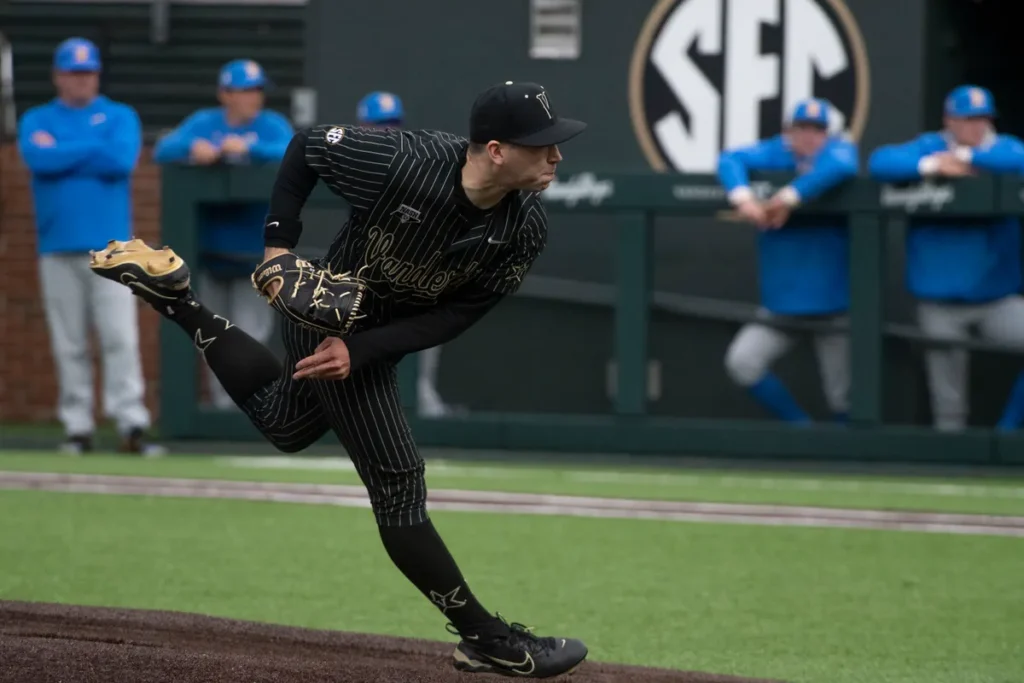
| G | IP | ERA | SO | BB |
|---|---|---|---|---|
| 15 | 69.1 | 5.19 | 98 | 27 |
Holton’s similar to Jump, a undersized lefty with a strong performance and some tools. He creates a tough angle for hitters which allows his stuff to play up, and he’s up to 97 and hides the ball well.
Holton has three solid secondaries, an upper-70s curveball with some sweep being his go-to and a mid-80s slider that works really well as an above-average bridge pitch between the curveball and fastball. He also uses a mid-80s changeup that projects.
Holton is equipped to miss enough bats and manage versus right-handed batters, keeping him in the rotation in pro ball.
10. Ryan Prager, LHP — Texas A&M
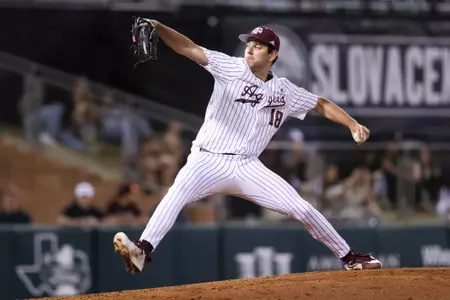
| G | IP | ERA | SO | BB |
|---|---|---|---|---|
| 19 | 97.2 | 2.95 | 124 | 12 |
Prager flashed this year, posting monster results despite the lack of ideal underlying numbers.
His arsenal plays quite north-south, with the fastball into the low-90s with carry, and maxing out around 93 mph. He also throws a slider and changeup, and he works both down in the zone with great success.
Prager has plus command and control and knows how to pitch. He projects as a high-floor, back-end starter, potentially with more if a team can somehow manage to squeeze more velocity out of his 6-foot-3, 210-pound frame.
11. Brandon Neely, RHP — Florida

He was placed in a hybrid role of long relief and starting because the Gators’ staff is loaded, but Neely would’ve been the consistent Saturday guy for a lot of programs.
Neely’s fastball gets up to 97 mph with monstrous life through the zone. The pitch manages to both hop over the barrel and maintain plenty of arm-side run. His ability to generate whiffs with the pitch bodes well for his chances to start.
Neely will also toss in a plus mid-80s slider with multiple shapes. His changeup is a distant offering.
Neely was the postseason hero out of the bullpen this year, which might have propelled his stock a bit.
Brandon Neely NCAA Tournament Stats
| G | IP | ERA | K | BB |
|---|---|---|---|---|
| 7 | 24 | 1.88 | 38 | 6 |
12. Thatcher Hurd, RHP — LSU

| G | IP | ERA | SO | BB |
|---|---|---|---|---|
| 18 | 44 | 6.55 | 56 | 24 |
Hurd’s three-pitch mix is as good as it gets, with a mid-90s riding fastball up to 97 mph, a firm slider with good shape, and a curveball with promising traits, including high spin rates and two-plane breaking action.
His entire arsenal has a chance to be plus, and the delivery is easy enough to project starter opportunities.
The stuff screams No. 2 starter, but the control and command need refining. The floor here is relatively high as a potential three-pitch reliever for the late innings.
13. Nate Dohm, RHP — Mississippi State

| G | IP | ERA | SO | BB |
|---|---|---|---|---|
| 8 | 29.1 | 1.23 | 37 | 4 |
Dohm lives and dies by the fastball. A mid-90s weapon up to 96 mph this year with plenty of ride, missing bats at the top of the zone. His command and overall feel is above-average.
The secondaries lag behind. His slider, curve, and changeup all flash average, each needing work before he’ll be ready for big-league bats. There’s injury and workload risk here when it comes to future role — he threw just 70.1 innings in two seasons at Mississippi State, but he throws strikes and is built like a major-league arm at 6-foot-4 and 215 pounds.
14. Chris Cortez, RHP — Texas A&M
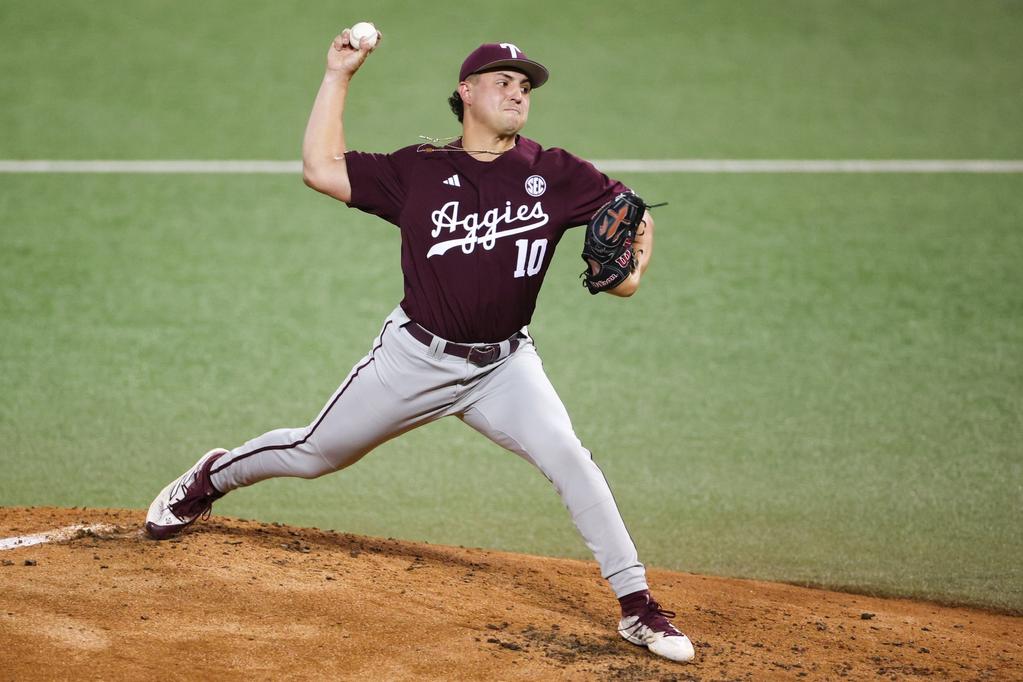
| G | IP | ERA | SO | BB |
|---|---|---|---|---|
| 25 | 64.2 | 2.78 | 102 | 37 |
Cortez pitched mostly in a relief role for the Aggies this year and to loud, loud results.
He could get a chance to start him in pro ball based on a plus slider and bowling ball-like, upper-90s sinker that has touched 101 mph, but he’ll have to find the zone more consistently.
It’s obscene arm talent, and in one-inning outings, it’s a high-leverage profile,
Photo of Hagen Smith courtesy of Arkansas Razorbacks
Photo of Jurrangelo Cijntje courtesy of Mississippi State Athletics
Photo of Bryce Cunningham courtesy of Vanderbilt Athletics
Photo of Luke Holman courtesy of LSU Athletics
Photo of Khal Stephen courtesy of Mississippi State Athletics
Photo of Ben Hess courtesy of Alabama Athletics
Photo of Drew Beam courtesy of Tennessee Athletics
Photo of Gage Jump courtesy of LSU Athletics
Photo of Carter Holton courtesy of Vanderbilt Athletics
Photo of Ryan Prager courtesy of Texas A&M Athletics
Photo of Brandon Neely courtesy of Florida Gators
Photo of Thatcher Hurd courtesy of LSU Athletics
Photo of Nate Dohm courtesy of Mississippi State Athletics
Photo of Christ Cortez courtesy of Texas A&M Athletics
- MLB DRAFT: Bazzana, Smith lead debuts for top picks - September 4, 2024
- Prospect notes on Rockies, D-Backs, Mariners, led by Troy, Arroyo, Karros - August 2, 2024
- MLB DRAFT: Boctor’s 5 best classes - July 17, 2024

